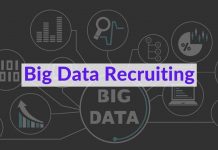How Data Help Recruiters Achieve Better Results?
The data and analytics approach can optimize the overall hiring process. There is ample number of ways that could enhance the hiring process. To make you understand how analytics in recruitment can benefit your hiring process, here we list the top benefits.
1. Eliminates Decision Making on Gut-Feeling:
A decision made on gut-feeling and not on reasonable and logical decision making can backfire. A charming candidate does not imply he will do well in the company.
Data-based recruitment software helps making decisions on not likeliness and preferences. Instead, they help to make decisions based on the recruitment software or tools available to use data. This way, companies can hire candidates based on their personality fit and skills.
2. Better Quality of Hire:
There is a huge difference between strong players and average players. Hiring the best employees can drastically improve the performance of your company both long-term and short-term.
With data and analytics, there are higher chances of recruiting the best talent. There are distinct approaches to improve hiring quality based on metrics you add and the data you use.
You can collect data based on the following aspects:
- Percentage of top performers or good hires
- Turnover rate
- Productivity time
- Hiring source
Having all such data in hand, you can identify which recruitment channel worked best for your company. Based on these aspects, you can make the necessary changes in your recruitment strategy and benchmark new data to old metrics.
3. Reduced Hiring Time:
If your company experiences a long hiring time, there can be a couple of areas where there is scope for improvement.
For this, you need to gather the following data first.
- Time taken to hire a person in a particular field
- The process of hiring
- Duration for which the process lasts and how long each step processes
For in-house hiring, you don’t have to practice generic recruitment strategy. You can analyze and take the exact steps to complete the process.
In this concern, you also have to figure out:
- The processes that takes longer
- Steps that can be skipped
- Steps that can be automated
4. Reduced Cost per Hire:
By decreasing the hiring time, you can also reduce the price involved in hiring by utilizing the correct data.
Specifically, you would require:
- Cost per hire details
- Average performance of employee per hire source
This way, you have to assess each hiring source including website, agency, social, and more for money spent on it along with the quality of employees gained. The source that turns best for the particular price must be invested.
In addition to the hiring sources, you also need to work on the recruitment process. If an interview screens around 80% of candidates, you need to conduct an online pre-screen. This way, you can:
- Reduce the hire rates based on how well applicant passes the tests. You can also sort candidates based on your company’s relevance.
- You can even remove unqualified candidates, i.e applicants who don’t seem to possess the right skill set.
5. Enhanced Candidate Experience:
Candidates with best skills and talents have lots of options. They are offered with innumerable job offers and targeted by recruiters. This makes it difficult to target them.
If you are following a tedious and long hiring process, such candidates will skip over your application and move to next potential employer. Hence, it is of utmost importance to offer candidates with enhanced experience.
Some of the best practices you can employ are:
- Go Mobile
- Create a fun application process
6. Eliminates Bias:
Human nature is biased. For example, if you are given a choice between two candidates among which one is extremely talented and the other looks charming and sweet. Most probably, you will hire one who has a pleasing personality.
But if you make such a decision, in a few months, you will see the results and realize that you have made an incorrect decision.
7. Better Forecasting:
Many companies predict anything about recruitment. For example, you cannot predict the money spent on recruiting new candidate particularly if you don’t keep track of how many employees end up quitting the job.
Using data and analytics, forecasting becomes easier.
It lets you make many interesting decisions so that you gain approximate on the recruitment budget. This way, when there is a requirement to hire a new employee, the recruiting manager possesses the money for it.
Most importantly, data and analytics can forecast the correct hiring time. Using data it is possible for a certain department to know when a new hire will enter in.
Analytics in Recruitment to Improve Hiring Infographic:
You can see things more clearly with this infographic:
Share this Image On Your Site
Final Words:
Whether you want to improve your entire recruitment process, improve hire quality, decrease cost of hiring, or avail any other benefit, using analytics in recruitment can help you achieve all of it with the right data. Just jump into it and experiment it right away!









































